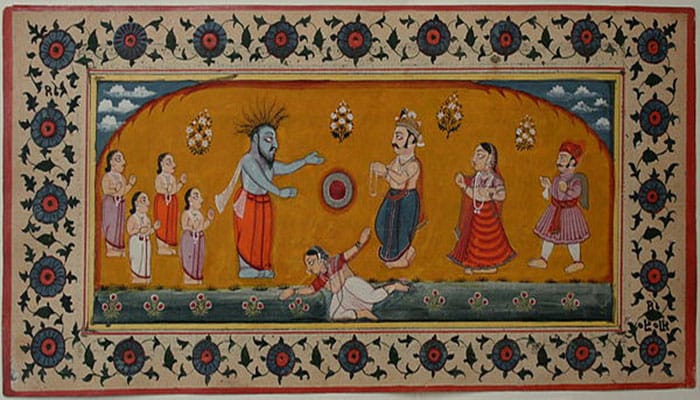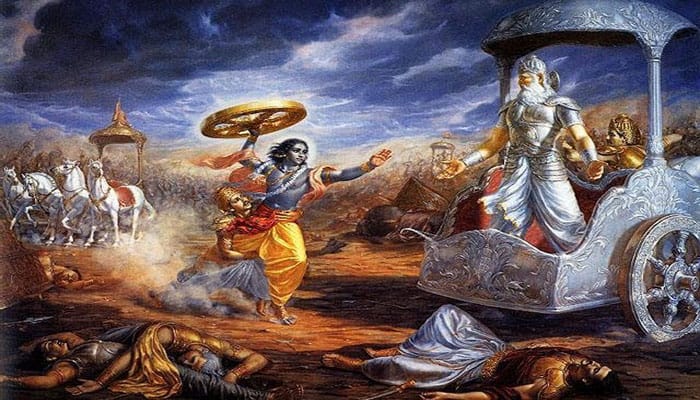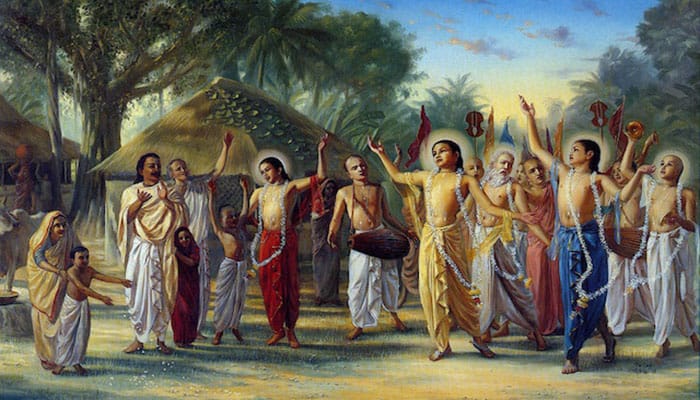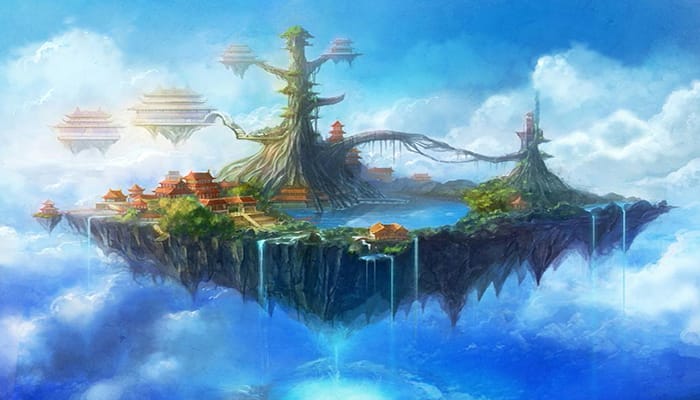The Hindu religion dates back to 5000-10000 BC. It is the oldest religion dating back to prehistoric times. Its mythology has stories; beliefs date back to ancient times. Hindu myths have a rich history, enigmatic characters, compelling stories, and surprising connections to modern science.

These Indian myths must have gone through numerous retellings over different periods of time. There is a cyclical period that repeats after a certain number of times, and there are also epics such as the Mahabharata and Ramayana. Here are 10 interesting strange and interesting Hindu myths.
1. Creation Theory.
Even within Hindu myths, there are several accounts for the creation of the universe. The theories vary in explanation and complexity. The most popular among them is that the highest deity was unaware of its own presence due to the existence of time. Before, there was only a black ocean that flooded everything and there was no time, space, or sky.
In another assumption, it says that everything began with the utterance of the sacred sound Oom or Aum. In the scriptures of Hindu myths, the ultimate reality or Brahma has three main functions. These are the characteristics of the trinity: Brahma, Vishnu, and Shiva. That is why in the Trimurti, there are three heads of three gods in a single body, where Brahma is the creator, Vishnu is the preserver, and Shiva is the ultimate destroyer.
2. Gods and goddesses
In Hindu myths, multiple deities are worshipped and belong to a pantheon of divinities. Through various lines in the sacred books, it is found that there are around 330 million gods in Hindu mythology. Each god has its own symbolism, such as Saraswati being the source of knowledge, Brahma being the creator of reality, and the divine trinity being seen as the basis of Hindu mythology.
The Vedas state that there are 33 main gods, and during the Upanishad era, there was a transition to 300 million gods. Although there are many gods and goddesses, Hindu myths place their main devotion in a supreme god of whom the other gods are avatars. The primitive divine is as old as the creation of the earth itself.
3. Hindu epics
Written in poetic Sanskrit verses, the epic of Hindu myths was written to teach morals and ideals to follow. The most popular of these verses were the Ramayana and the Mahabharata. Ramayana is the story of Rama from his birth in Ayodhya to his final victory over Ravana, his nemesis. The epic teaches the moral of brotherhood and the sacrifices one must make to defeat the supreme evil.
The second is Mahabharata, which is the longest epic ever written. It is seven times longer than the Odyssey and Iliad combined. It was written between 400-200 BCE and gives an insight into the emergence of Hinduism. In addition to the story of the Kauravs and Pandavas, it also offers detailed scripts from the Bhagavad Gita. It is in the form of a recital to narrate the story of the end of the great battle against the troublemakers. The Bhagavad Gita became the epitome of the sacred scriptures of Hindu myths.
4. Foundation of Hinduism
There is no single sacred scripture or founder of Hinduism, nor was it founded at a particular time. Unlike other traditional religions, it is a fusion of different beliefs, traditions, and philosophies. There are several theories that contradict each other, and therefore there are different theories about the origin of this religion. The first texts mentioned were written by ancient sages or Rishis, but these sacred writings were recited orally.
Traces of Hindu mythological culture date back to ancient India, where it was an unclear tradition without any nomenclature around 5500 BCE. The term Hindu became popular only after the Mughal era in contemporary India. The term became popular in the 19th-20th centuries, when British colonialism spread rapidly in India.
Around the time of 300 CE, the god named Shiva was worshipped in the Indus Valley according to evidence. The Mahabharata, which gave an immense insight into Hindu mythology in the form of the Bhagavad Gita along with a crucial historical text, was also written in the period between 400 BCE and 200 CE.
5. The Vedas and modern science
The Vedas are collections of hymns and religious texts written in Sanskrit in regions of the contemporary Indus civilization between 1500 and 1000 BCE. Scientists find a strong connection to modern science even though they were written thousands of years ago.
Like the multiverse theory, where scientists proposed the idea of multiple universes. In the Hindu Veda within Hindu myths, this “modern” concept is already mentioned as the existence of infinite cyclical worlds in ancient Hindu cosmology. The Veda and Bhagwat Gita had a perfect understanding of the universe.
6. Curses
There is a history of curses within Hindu myths. Hindu gods did not curse much because they had the power to cause great harm to others, but there were some cases where they did curse, and these are worth mentioning in Hindu mythology.
In the epic Mahabharata, the Pandavas knew that Karna was their half-brother only after killing him. This caused them immense grief, and Yudhisthir became so angry with his mother Kunti that he cursed that no woman could keep the secret.
Another curse is given to Pandu that if he approaches any woman he desires, he will die on the spot. Then there is another curse from Gandhari to Lord Krishna after the math of the Mahabharata war, where the 100 sons, Kauravs, are killed. Krishna, after defeating the Kauravs, goes to see his mother Gandhari to console her, but she curses him that there will be no bloodline of Krishna.
Thus, slowly, Krishna’s lineage begins to kill each other and also dies prematurely without anyone to continue the bloodline.

7. Kali Yuga
The last age in the Maha Yuga is Kali Yuga, which is the current yuga. It has the shortest span of only 432,000 human years and is also known as the Iron Age within Hindu myths. Humans of Kali Yuga are tempted by desires and sins. They have a fickle conscience and are unstable hypocrites.
In terms of physicality and intellect, the human body is at its lowest point. The lifespan of a person is only 100 to 120 years, and they are only 3.5 cubits tall. It is predicted that when Kali Yuga reaches its final years, the lifespan of humans will be only 20 years.
In Indian mythology, it is said that 5,000 years of Kali Yuga have already passed. In this era, humans reach the zenith of materialism and are the contrast to previous human lives where they lose connection with their inner selves.
8. Dwapar Yuga
The third consecutive age is Dwapar Yuga, also known as the Bronze Age in Indian mythology. It lasted 864,000 human years. This is the age when good and evil are equal and people lose purity (satva) from their bodies. They gain control over their bodies but lose control over their intellect.
When this age was at its peak, humans had lost control over their innermost knowledge and had become materialistic. Their desires increased, but only a few people could retain their intellect, such as Bhisma, Dharmaraja, and Vidhura. Those who were physically huge thirsted for power and became obsessed with it. Life expectancy also decreased to 1,000 years.

9. Treta Yuga
Treta Yuga is the second in the cycle of Maha Yuga, which lasted 1,296,000 human years in Hindu mythology. In this era, the goodness among people during Satya Yuga had disappeared and goodness was accompanied by Tama and Rajas. Tama is the darkness in human nature and raja means that human passion can evoke. They had gained intellect but lost control over their bodies.
The structure of the body also began to shrink and was about 14 cubits tall, although there were some exceptional beings who had built pious structures such as Rama, Laxmana, Ravana, and Hanumana, who were considered divine due to their extraordinary strength.

10. Satya Yuga
According to Hindu myths, the cycle of creation and destruction has four ages or Yuga, of which the first is Satya Yuga. Its duration was 1,728,000 years. It was the golden age of truth and enlightenment where people attained the mental state of the idea and their actions were always reasoned with virtuous deeds. There was also a flow of ideas among people.
People led a life based on truth, and everyone knew the answer to the ultimate question about the origin of everything. People had nothing to hide and were open to themselves, so there was no verbal communication. People’s physiology also differed, as they were 31.5 feet tall and lived for over 100 years.


